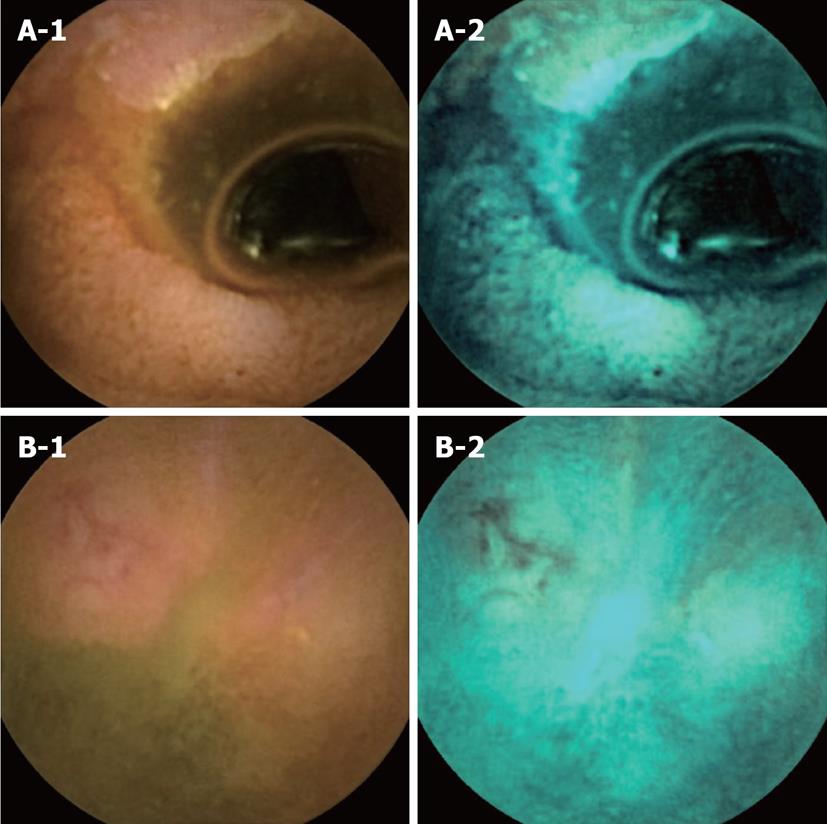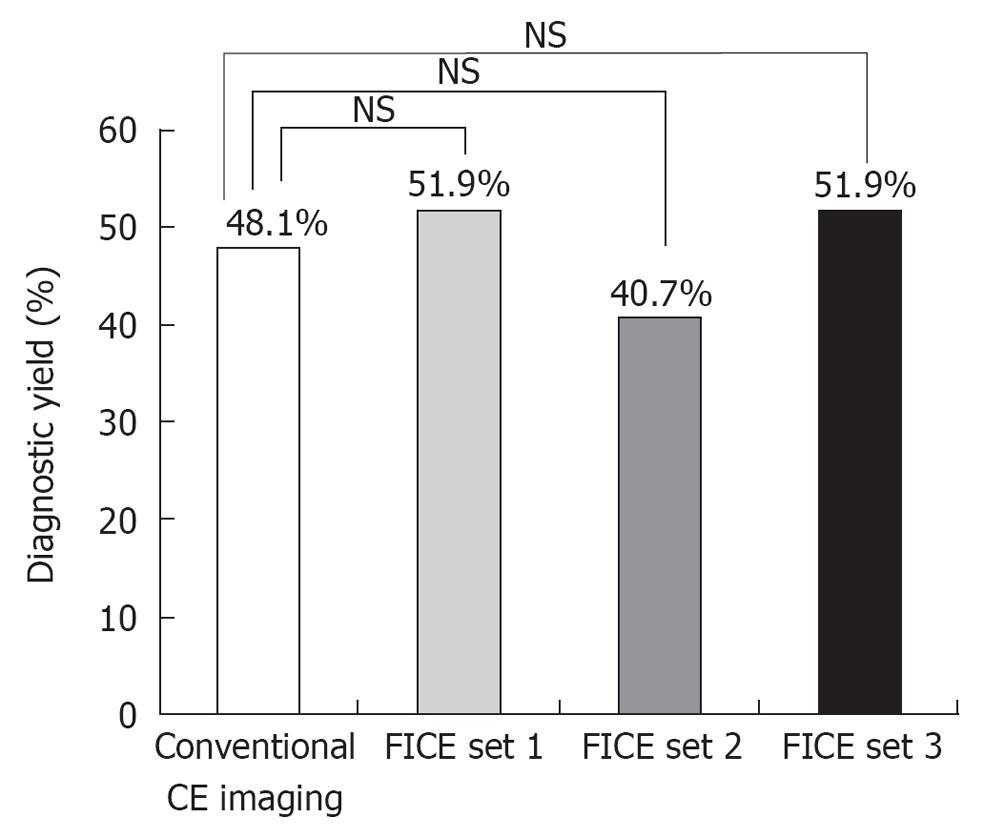Copyright
©2012 Baishideng.
World J Gastrointest Endosc. Sep 16, 2012; 4(9): 421-428
Published online Sep 16, 2012. doi: 10.4253/wjge.v4.i9.421
Published online Sep 16, 2012. doi: 10.4253/wjge.v4.i9.421
Figure 1 Effect of the spectral specification of flexible spectral color enhancement on the mucosal contrast of a small bowel erosion.
A: Conventional capsule endoscopy image; B-D: Capsule endoscopy-flexible spectral color enhancement images derived from the 3 different wavelength settings [set 1 (B), set 2 (C), set 3 (D)].
Figure 2 Two cases of flexible spectral color enhancement could effectively detect of a small bowel lesion that was missed on conventional capsule endoscopy imaging.
A-1: Conventional capsule endoscopy (CE) image; A-2: Flexible spectral color enhancement (FICE) set 1. An ulcer was missed with conventional CE imaging and only detected with FICE imaging; B-1: Conventional CE image; B-2: FICE set 3. An angioectasia was missed with conventional CE imaging and only detected with FICE imaging.
Figure 3 Two cases of small bowel lesions were missed with flexible spectral color enhancement imaging.
A-1: Conventional capsule endoscopy (CE) image; A-2: FICE set 2. An ulcer was missed with flexible spectral color enhancement (FICE) imaging and only detected with conventional CE imaging; B-1: Conventional CE image; B-2: FICE set 2. An ulcer was missed with FICE imaging and only detected with conventional CE imaging.
Figure 4 Diagnostic yields in conventional capsule endoscopy imaging and each set of flexible spectral color enhancement imaging.
The overall diagnostic yields of capsule endoscopy (CE) in flexible spectral color enhancement sets 1, 2, 3 and the conventional CE imaging were 51.9%, 40.7%, 51.9% and 48.1%, respectively, which showed no statistical difference (P = 0.5, 0.23 and 0.5, respectively).
- Citation: Matsumura T, Arai M, Sato T, Nakagawa T, Maruoka D, Tsuboi M, Hata S, Arai E, Katsuno T, Imazeki F, Yokosuka O. Efficacy of computed image modification of capsule endoscopy in patients with obscure gastrointestinal bleeding. World J Gastrointest Endosc 2012; 4(9): 421-428
- URL: https://www.wjgnet.com/1948-5190/full/v4/i9/421.htm
- DOI: https://dx.doi.org/10.4253/wjge.v4.i9.421












